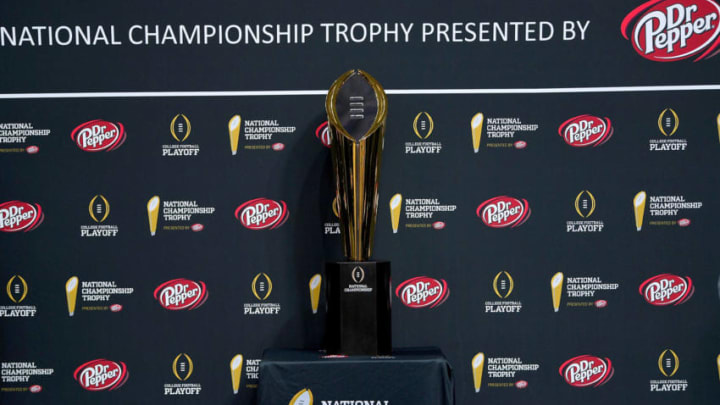College Football Playoff 2019: What would a 16-team field look like?
By John Scimeca

16-team playoff results
First Round
South
- No. 1 LSU 59, No. 16 Miami (OH) 13
- No. 9 Florida 33, No. 8 Wisconsin 27
West
- No. 4 Oklahoma 45, No. 13 Boise State 35
- No. 12 Memphis 24, No. 5 Georgia 17
East
- No. 3 Clemson 48, No. 14 Appalachian State 7
- No. 6 Oregon 37, No. 11 Penn State 28
Midwest
- No. 2 Ohio State 41, No. 15 Florida Atlantic 21
- No. 10 Utah 23, No. 7 Baylor 20
Quarterfinals
South
- No. 1 LSU 36, No. 9 Florida 21
West
- No. 4 Oklahoma 49, No. 12 Memphis 34
East
- No. 3 Clemson 41, No. 6 Oregon 20
Midwest
- No. 10 Utah 30, No. 2 Ohio State 24
Semifinals
- No. 1 LSU 44, No. 4 Oklahoma 38
- No. 3 Clemson 35, No. 10 Utah 20
Final
- No. 3 Clemson 26, No. 1 LSU 24
At the end of the day, a 16-team college football playoff would reveal some of the shortcomings of other postseason events: sometimes regular-season revenge meetings are inevitable, and sometimes a team can get blamed for (or benefit from) having an easier path to the title game than others.
In this scenario, a plucky Memphis squad upsets the Bulldogs in the first round. Utah, smarting from its Pac-12 championship game loss to Oregon, outlasts both Baylor and Ohio State in back-to-back upsets (according to seed) to make a magical run to the semifinals. In the end, Clemson outlasts LSU in a classic national title bout of two of this year’s biggest heavyweights.
Next. Ranking college football's top 50 fanbases. dark
Hey, a 16-team playoff seems farcical and unrealistic. But imagine what fans would have faced in years past if the 2019 season happened (like, say, during the BCS years): Dabo Swinney, Trevor Lawrence, and the defending national champion Tigers might have been unable to defend their crown if they remained in the No. 3 spot.